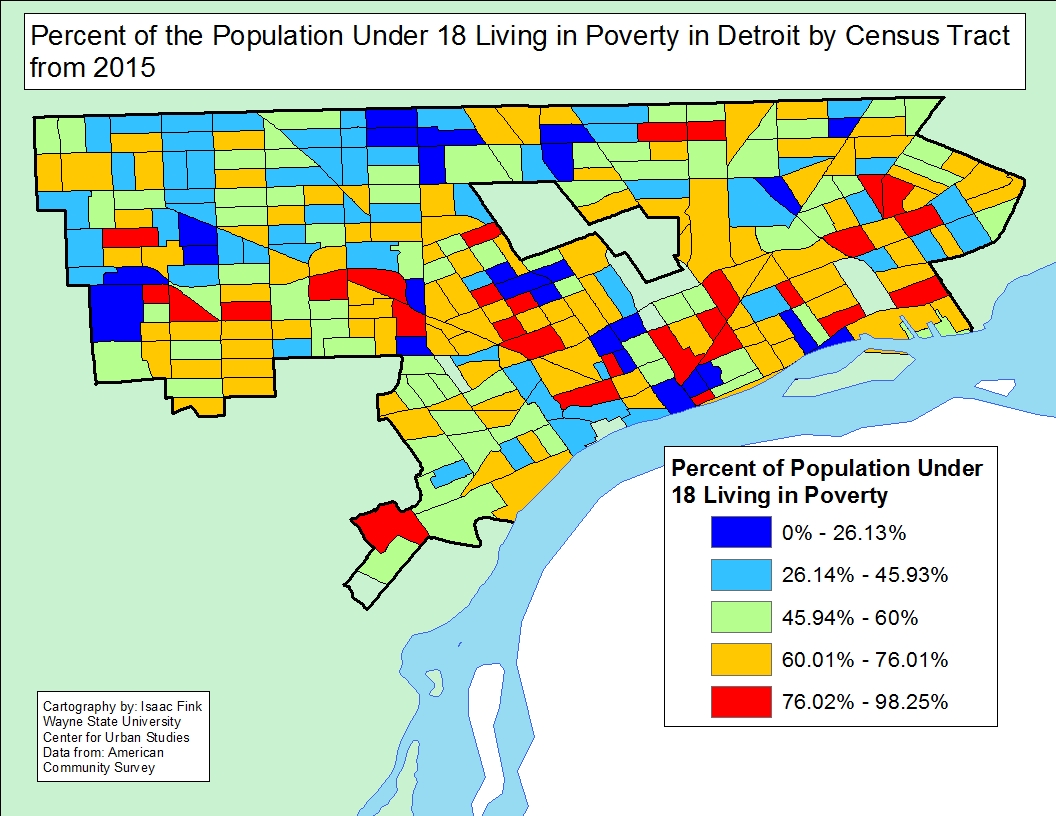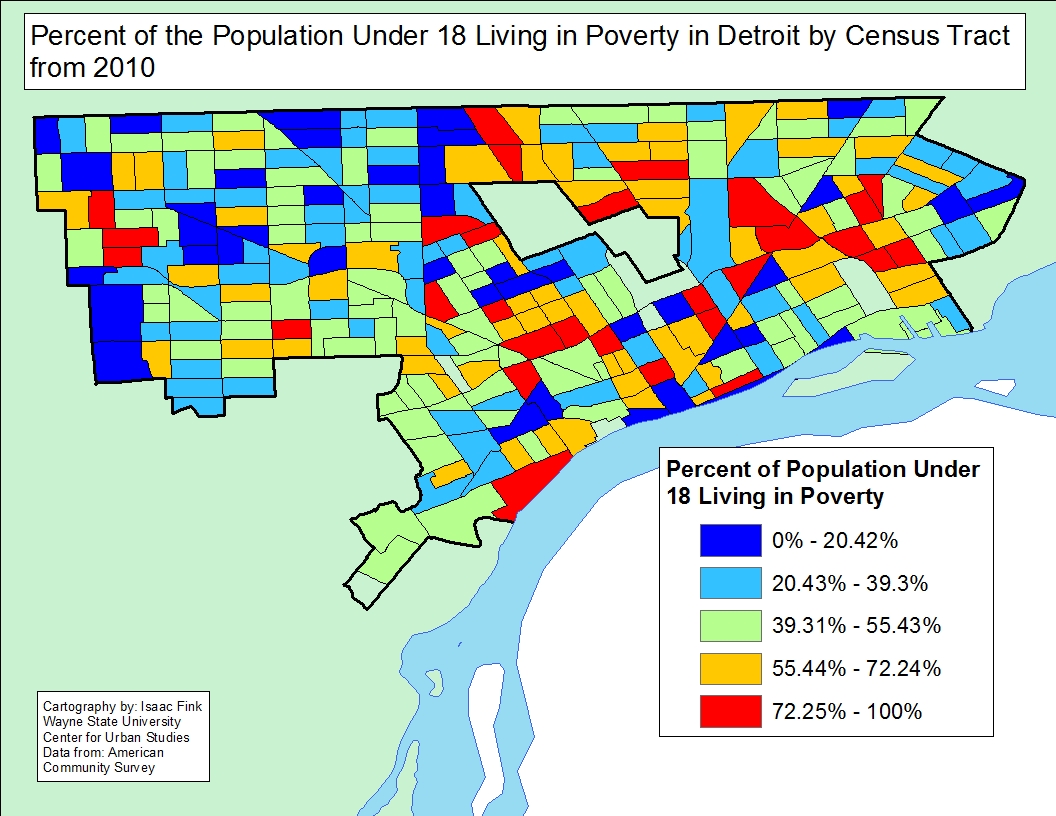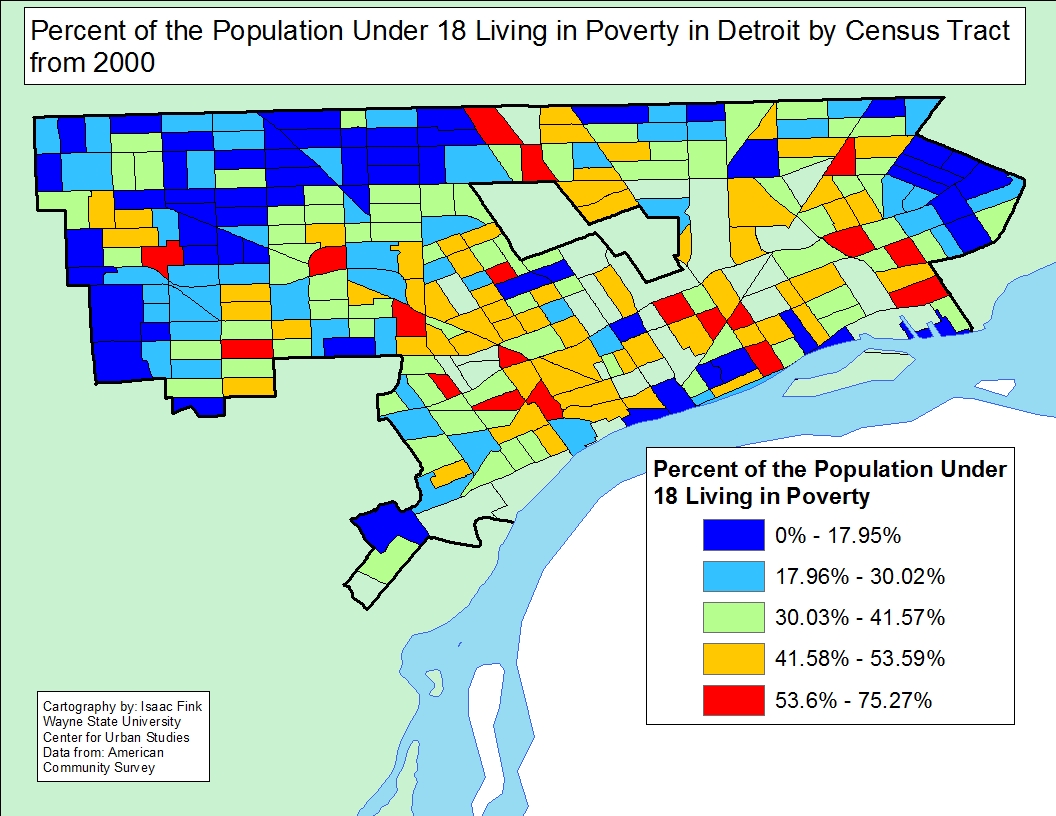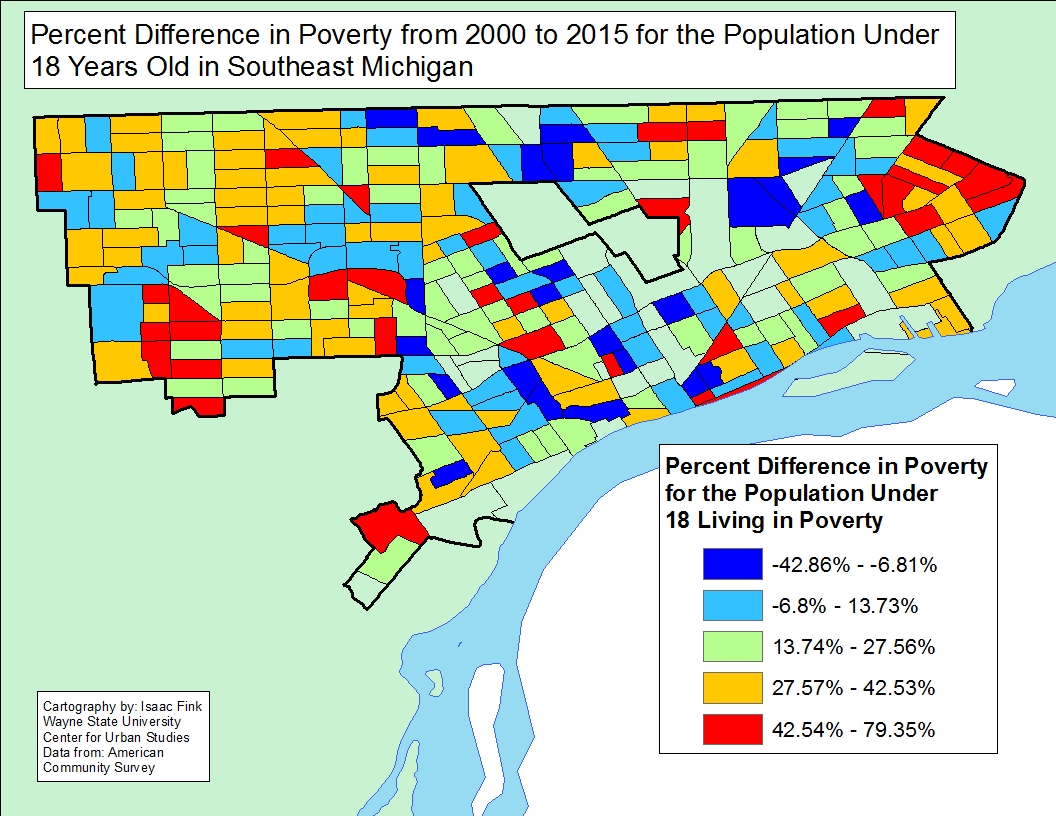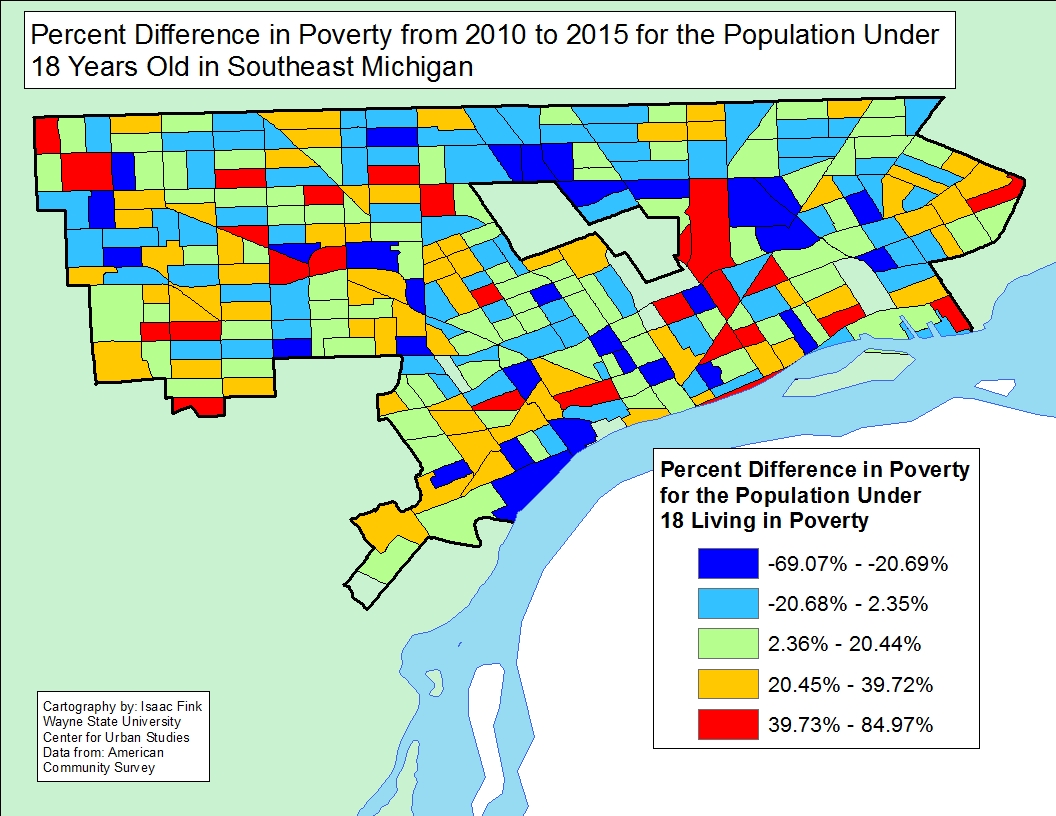Childhood poverty in Detroit has increased about 23 percent since 2000 and about 10 percent since 2010, according to data from the U.S. Census Bureau. In 2015 it was reported that the percentage of children under the age of 18 living in poverty in Detroit was 57.1 percent. This is compared to 46.9 in 2010 and 33.9 in 2000.
According to the U.S. Department of Health and Human Services, the poverty threshold for an individual in 2015 was an annual earning of $11,770 and for a family of four it was $24,250. In 2010 the poverty threshold for an individual was $10,830 and for a family of four it was $22,050. In 2000 the poverty threshold for an individual was $8,350 for a family of four was $17,050.
2015
In 2015, there were 29 Census tracts where between 76 and 98 percent of children were living in poverty. Of these Census tracts, 14 were located east of Hamtramck, with four located along Gratiot Avenue (the southern portion). On the western side of the City of Detroit, there were five Census tracts with between 76 and 98 percent of children were living in poverty along Grand River Avenue. Also, there were seven Census tracts with between 76 and 98 percent of children living in poverty west of Livernois Avenue.
2010
In 2010 the percentage of children living in poverty in Detroit was 47 percent. The majority of the Census tracts west of Livernois Avenue had less than 56 percent of children living in poverty. There were 29 Census tracts where more than 72 percent of children were living in poverty and 25 of those were located east of Livernois Avenue.
2000
In 2000, 34 percent of children were living in poverty; this was the lowest percentage among the three years being compared in this post. A look at the map shows that majority of the Census tracts on the west side of the City had less than 31 percent of children living in poverty. Just west of Livernois Avenue is where majority of the Census tracts with more than 42 percent of children living in poverty were located. In total, there were 19 Census tracts where 53 percent or more of children lived in poverty in 2000.
Child Poverty Percent Change 2000-15
Between 2000 and 2015 there was a 23 percent increase in the percentage of children living in poverty in Detroit. A large part of that increase came from 36 Census tracts where there were percentage increases between 43 and 79 percent of children living in poverty. A handful of these Census tracts were located along Grand River Avenue. One of those Census tracts was the same as one of the 2015 Census tracts with the highest percentage of children living in poverty. In addition to large percentage increases in areas along the Grand River and Gratiot corridors, there were also two clusters of Census tracts in Detroit where there were increases between 43 and 79 percent of children living in poverty. One cluster was in the eastern portion of the City in the Denby neighborhood area, and the other was in the eastern portion of the City in the Brightmoor/Cody area. While majority of the Census tracts in the City experienced percentage increases in the percent of children living in poverty between 2000 and 2015, there were a number of Census tracts that experienced percentage decreases. While there weren’t large clusters experiencing such decreases, many of these Census tracts were located in the central area of Detroit.
Child Poverty Percent Change 2010-15
Between 2010 and 2015 there was a 10 percent increase in the percentage of children living in poverty. The map shows there were fewer Census tracts that experienced the highest tier of percentage increases for children living in poverty for the 2010-15 time frame than the 2000-15 time frame. In total, there
were 26 Census tracts where there was between a 40 and 85 percent increase in the percentage of children living in poverty in Detroit. Of these Census tracts, four were located along Grand River Avenue and another three were located along Gratiot Avenue.. On the opposite side of the spectrum, there were about 30 Census tracts with decreases between 21 and 69 percent in the percentage of children living in poverty. There were about 10 more Census tracts in the 2010-15 time frame than the 2000-15 time that experienced the highest tier in percentage decreases in the percentage of children living in poverty.
This deep dive into the percentage of children living in poverty in Detroit in 2015, and how those percentages have changed since 2000 and 2010, shows that poverty in the City is increasing across most neighborhoods, though the pace and breadth of increases has slowed since 2010. Our previous posts show that regionally childhood poverty is increasing at a faster rate than overall poverty levels, and Detroit is no exception to this. In our last post we suggested the need for job development and training in Detroit neighborhoods to allow individuals-particularly young adults-to have greater opportunities to participate in the labor force. Such opportunities for Detroit residents would also be an avenue to decrease the rate of childhood poverty.
